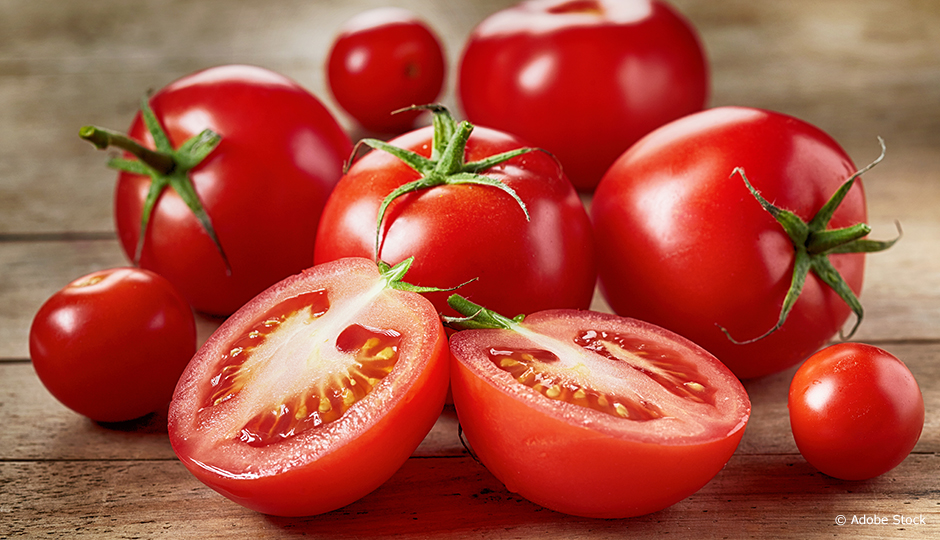To adapt to their environment, plants produce a wide range of molecules, including pigments and volatile compounds. These compounds are what give fruits and flowers their characteristic aromas, but very little is known about how they are synthesized. Charles Goulet, professor in the Department of Phytology at Université Laval, set out to study the complex mechanisms that produce the compounds in plants and in tomatoes in particular.
Goulet took a look at apocarotenoids, a class of compounds that is critical to the taste quality of fruits.
Goulet took a look at apocarotenoids, a class of compounds that is critical to the taste quality of fruits. They are produced when enzymes split the carotenoids—the pigments that give the tomato its colour.
The research conducted by Goulet and his team revealed that the lipoxygenase enzyme family plays a key role in volatile compound synthesis. Indeed, without lipoxygenases, the amount of apocarotenoids released by the tomato is cut by nearly half.
To better understand this metabolic pathway, Charles Goulet compared gene expression in two species of violets—sweet violet and northern woodland violet—to isolate the enzymes that are vital to apocarotenoid synthesis in sweet violet. The researchers now want to determine whether these processes also occur in tomatoes and are therefore common to both plant species.
Understanding the inner workings of the secondary metabolisms of plants is of significant benefit in agronomy. “It will enable us to develop plant varieties with different aromatic profiles and bring back flavours we’ve lost,” explains Goulet. More extensive genetic knowledge will lead to combinations to produce a cultivar with a specific aroma and, ultimately, an even more delicious tomato!




